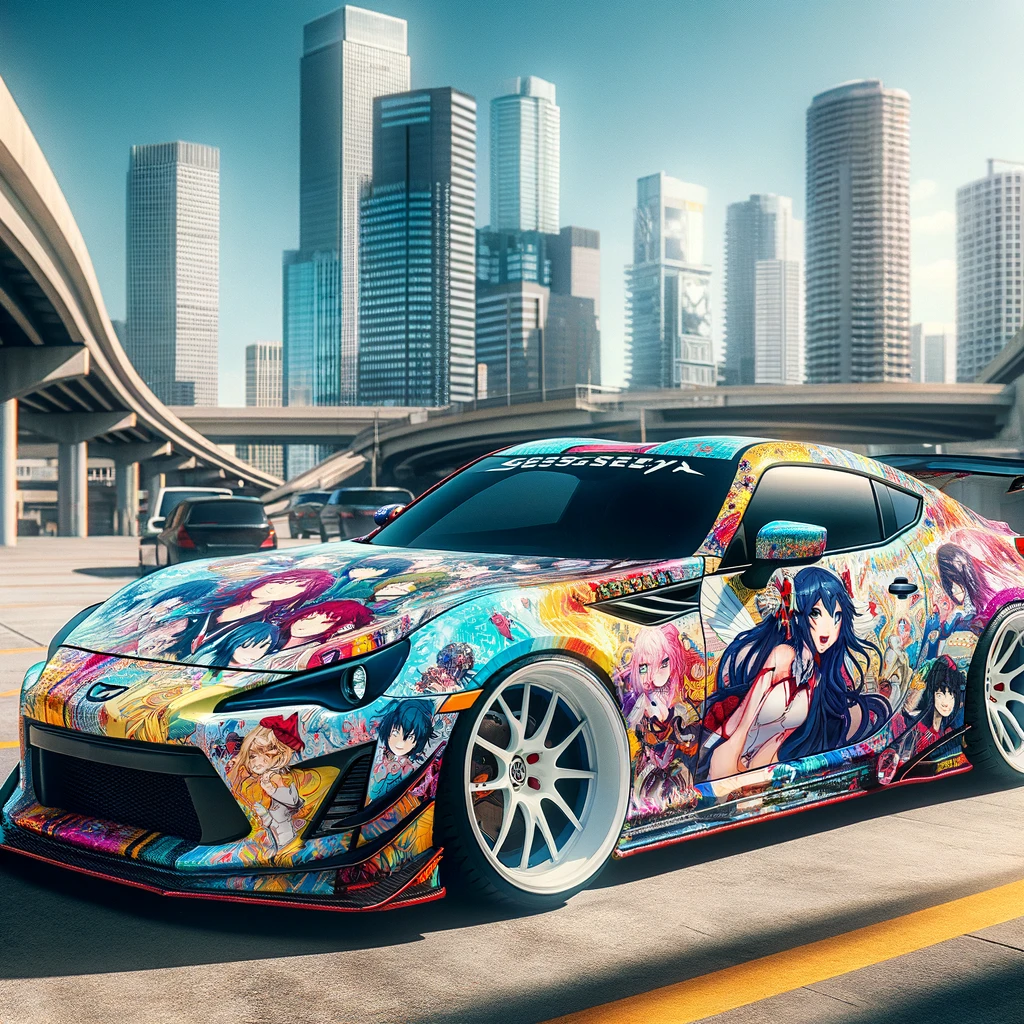The Peculiar Charm of Anime-Clad Vehicles: An Exploration into “Itasha” Culture
The phenomenon of vehicles wrapped in anime stickers, colloquially deemed “painfully ugly” by some, unfolds a narrative deeply rooted in the confluence of anime fandom and car modification culture. This post delves into the essence of “Itasha,” the craftsmanship behind these mobile canvases, and the subjective nature of beauty within automotive aesthetics.
Index
The Cultural Intersection of Anime and Automotive Enthusiasm
Anime, a form of animation originating from Japan, has transcended its geographical origins to captivate a global audience. Its rich storytelling, diverse genres, and unique visual flair have cemented it as a significant cultural export. Enthusiasts often showcase their passion through cosplay, merchandise, conventions, and notably, car modifications—giving birth to the “Itasha” phenomenon. The term “Itasha,” translating to “painful car,” humorously comments not on physical discomfort but rather on the financial and social repercussions of adorning a vehicle with vibrant anime graphics. This practice represents a daring fusion of automotive and anime cultures, challenging the conventional perceptions of vehicle aesthetics.
Aesthetic Exploration: The Controversial Beauty of Itasha
Beauty, especially in the context of car aesthetics, is highly subjective. Traditional automotive culture prizes sleek designs, performance enhancements, and a degree of understatement. In stark contrast, Itasha culture embraces extravagance and expressiveness through the application of anime stickers. These vehicles, often viewed as “painfully ugly” by mainstream standards, are celebrated within their community for their bold personal expression and dedication to fandom. The Itasha movement highlights a fascinating dichotomy in aesthetic values, showcasing how beauty can indeed lie in the eye of the beholder.
The Craft Behind Anime Sticker Customization
Creating an Itasha is an art form requiring meticulous planning, design sensibility, and a nuanced understanding of both the vehicle’s form and the chosen anime artwork. These customizations can range from subtle embellishments to full-vehicle wraps that transform the car into a moving piece of anime art. The process not only demonstrates the owner’s commitment to their fandom but also their willingness to engage in a creative and technical challenge, blending the worlds of automotive tuning and graphic design.
Social Implications and Community Reception
The reception of Itasha varies widely across different cultures and social contexts. In Japan, where anime is ingrained in popular culture, Itasha enjoys a niche yet accepted status. Globally, reactions can be mixed, with enthusiasts finding solidarity at specialized events and car shows, while facing incomprehension or critique from the wider public. The choice to own and drive an Itasha speaks to a broader theme of individuality and community belonging, illustrating how personal interests can shape one’s identity and social interactions.
Conclusion: Embracing Diversity in Automotive Expression
The discussion of “painfully ugly cars covered in anime stickers” opens a broader dialogue about the nature of aesthetic judgment, cultural exchange, and personal expression. It challenges us to reconsider our definitions of beauty and to appreciate the diverse ways people find joy and community through their hobbies. While Itasha may not conform to traditional automotive beauty standards, it embodies a vibrant subculture that celebrates creativity, passion, and the unapologetic pursuit of individuality.
